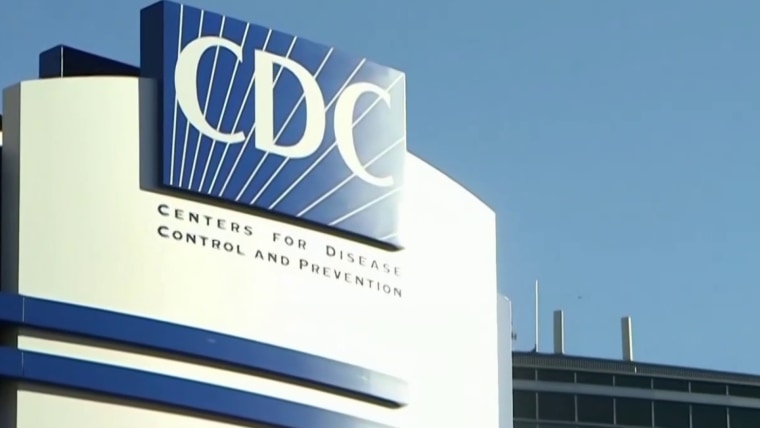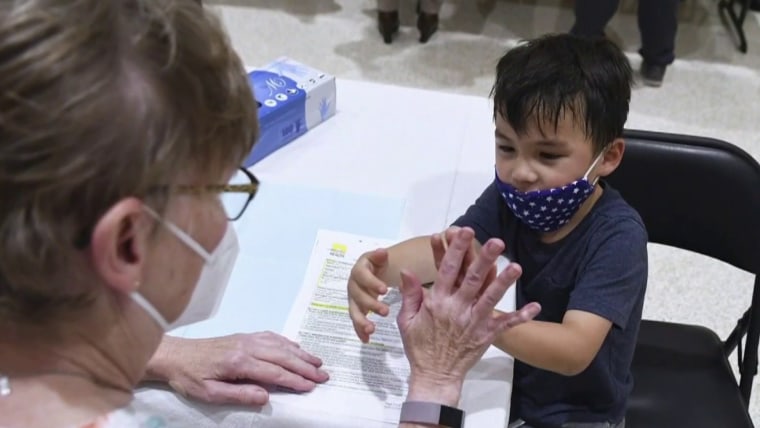Dr. Michael Kilkenny did not expect the Centers for Condition Management and Avoidance news release he received on Dec. 27.
Four days previously, the CDC had minimize the isolation time for well being treatment workers with Covid to 7 times, if they have been asymptomatic and experienced a detrimental take a look at. The new announcement explained that people today with Covid could isolate for just five times soon after indicators developed, alternatively of 10.
“When we got a press launch on the 27th that seemed to contradict advice we bought on the 23rd — that was very a bombshell for us,” explained Kilkenny, chief govt officer and health officer of the Cabell-Huntington Health and fitness Division, which serves Huntington, West Virginia, and the bordering county.
Around the state, educational facilities and wellness companies scrambled to interpret the news release and regulate their policies — only to alter program yet again when the CDC crammed out information and its rationale in entire steering revealed about a 7 days afterwards.
“That gap left us guessing what we ought to truly do,” Kilkenny stated. “That’s not good administration and superior communication. It potential customers to misunderstanding. It qualified prospects to distrust.”
The CDC decision to lower isolation periods in fifty percent for quite a few people who have caught Covid-19 took area general public wellness companies by shock and still left some battling to reveal to their communities precisely what the improvements meant and why federal officers experienced manufactured them. Gaps in communication involving federal, condition and regional officers have left some public well being leaders fearing that they’ve dropped have faith in with those they serve amid general public confusion.
In interviews, three neighborhood community well being leaders, 1 state chief and two leaders of professional medical associations available a mixture of reactions to the CDC’s the latest shifts: disappointment in excess of absence of interaction but also knowledge that just about every community wellness officer faces problems in creating timely modifications and providing very clear assistance. None took challenge with the steerage alone.
“We had been listening to from the hospitals, in certain, terrific issue for how we were being going to be capable to continue to keep operations heading,” said Dr. Philip Huang, the director of the Dallas County Wellness and Human Solutions department in Texas, who said his agency was hunting at modifications to local quarantine and isolation protocols prior to the CDC built its recommendations. “Was it perfect? No. I believe however, these are amazing moments with plenty of variables and items occurring.”
The quick unfold of the omicron variant intensified a pandemic rigidity for public overall health officials: How to go speedily while also sending obvious and regular messages to a weary community. It did not enable that the variant was having off in the course of what lots of had hoped would be a holiday break.
As omicron took keep in December, federal officers responded with a flurry of modifications.
First, the CDC shortened its suggestions for isolation time for Covid-constructive wellness staff to seven times just after a adverse examination on Dec. 23. It explained wellbeing employees who had been given booster photographs did not have to have to quarantine just after exposures.
Then, on Dec. 27, the company declared in a information launch that it was shortening isolation time for the broader community to five days if symptoms were being resolving, with one more 5 times of masking afterward.
The agency did not publish a entire update and rationale behind the new procedures till Jan. 4, when it also clarified insurance policies for particular groups like these in well being treatment, jails and homeless shelters.
Some wellbeing industry experts have criticized the procedures, which deficiency screening demands for the broader public. Meantime, several in the basic general public expressed confusion.
Federal officials have stated they transformed the pointers over fears that omicron’s quick spread would shut down important services and also due to the fact they imagine the vast majority of viral transmission usually takes put early in an infection.
But local officers say they were still left in the dark about what, just, they should to be telling users of their community who experienced concerns about the new assistance.
“The push launch of Dec. 27 astonished me,” explained Kilkenny, who included that he trusts the agency to make seem decisions dependent on science and that he follows the agency’s recommendations practically religiously. “We act on steerage. We really do not act on press release.”
Lori Freeman, main govt of the Countrywide Affiliation of County and City Health Officials (NACCHO), stated the CDC normally communicates in progress over significant coverage shifts. That didn’t occur this time.
“There have been no speaking details, if you will, or aspects about the switching direction,” Freeman stated, introducing that local wellness officials “had a hard time answering thoughts and responding in a good or educated way.”
That still left some officials out of action with the news of the day.
“The a lot more it seems to be disjointed, which is when men and women begin to dilemma the actual steerage,” Freeman stated.
And area public wellbeing leaders fret that their impact on crucial health actions has by now waned drastically.
“A good quite a few of our public have stopped listening to us completely. Definitely, I can not get any a lot more individuals to get vaccinated or have on masks than what are accomplishing it now based mostly on something I say,” Kilkenny reported.
Michael Fraser, the govt director of the Affiliation of Point out and Territorial Wellbeing Officials, explained omicron grew to become an unexpected emergency at an regrettable time, for the duration of the vacations when drained community wellbeing officials and the relaxation of the nation were being keen for a break.
But omicron was spreading so rapidly that it was turning into, from his standpoint, terrifying.
“I think we’re definitely misplacing criticism on CDC right now,” Fraser reported. “We were being really anxious and healthcare facility capability was very restricted. They essential to do a little something.”
Some states, like Michigan, to begin with refused to adopt the suggestions, but came all around afterwards immediately after hearing more about the CDC’s rationale, Fraser claimed.
And local wellness leaders explained the new CDC assistance may possibly much better mirror what disruptions people are ready to offer with in some communities. Some folks have been not following the prior quarantine pointers, which proposed that unvaccinated people today quarantine for 14 days just after an exposure.
“Our compliance for recommending that was extremely minimal soon after two a long time,” claimed Lisa Macon Harrison, overall health director for Granville and Vance counties in North Carolina, introducing that science ought to be balanced with the realities of what people are inclined to do to cut down the distribute of the virus.
Harrison, also the board president of NACCHO, explained she would have preferred that federal, condition and neighborhood companies be in lockstep about how to speak about the new rules, but that was not constantly achievable.
“It’s irritating not to be in the know on each determination and certainly, I give grace to the reality that we’re all in a pandemic response,” Harrison stated. “We often have to make decisions more quickly than allows for inclusive discourse.”


